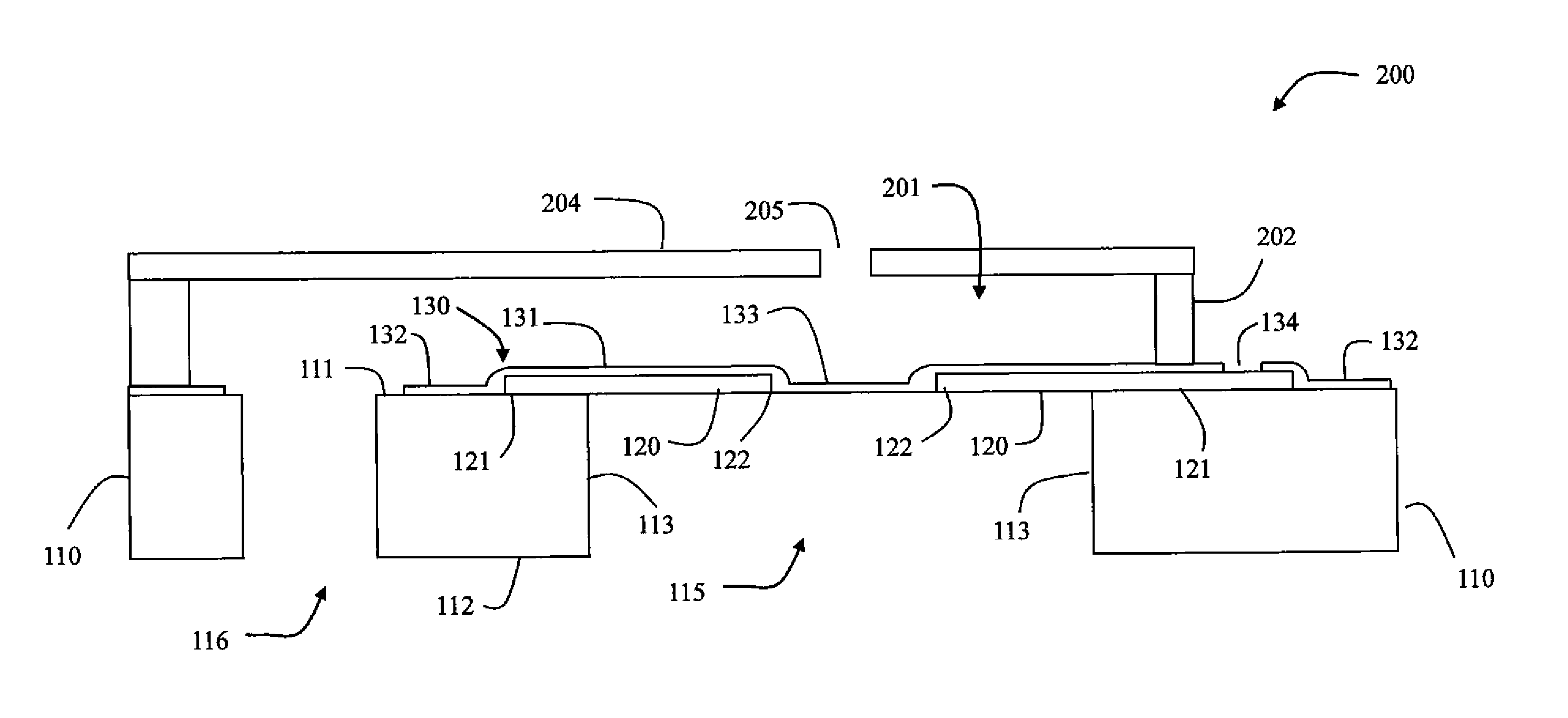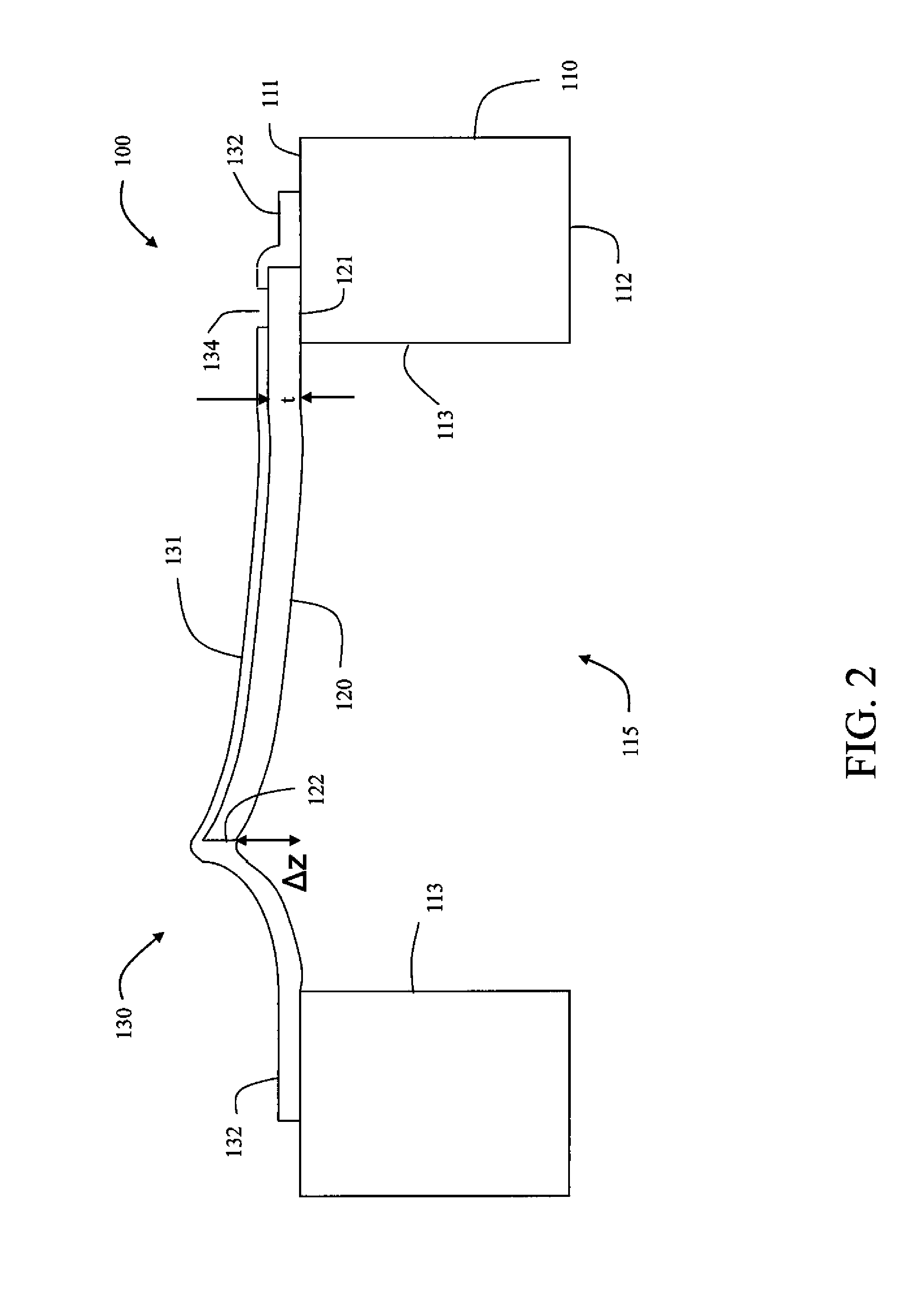Fluid ejection using MEMS composite transducer
a composite transducer and flue gas technology, applied in the direction of printing, other printing apparatus, etc., can solve the problems of not being able to provide the range of performance desired, not being able to provide the independent operation of mems transducers, and not being able to provide the sealing cavity of typical mems transducer designs
- Summary
- Abstract
- Description
- Claims
- Application Information
AI Technical Summary
Benefits of technology
Problems solved by technology
Method used
Image
Examples
Embodiment Construction
[0035]The present description will be directed in particular to elements forming part of, or cooperating more directly with, apparatus in accordance with the present invention. It is to be understood that elements not specifically shown or described may take various forms well known to those skilled in the art.
[0036]Embodiments of the present invention include a variety of types of fluid ejectors incorporating MEMS transducers including a MEMS transducing member and a compliant membrane positioned in contact with the MEMS transducing member. It is to be noted that in some definitions of MEMS structures, MEMS components are specified to be between 1 micron and 100 microns in size. Although such dimensions characterize a number of embodiments, it is contemplated that some embodiments will include dimensions outside that range. Typically, the fluid ejectors of the present invention eject liquid, in the form of drops, when a liquid drop is desired.
[0037]FIG. 1A shows a top view and FIG....
PUM
 Login to View More
Login to View More Abstract
Description
Claims
Application Information
 Login to View More
Login to View More - R&D
- Intellectual Property
- Life Sciences
- Materials
- Tech Scout
- Unparalleled Data Quality
- Higher Quality Content
- 60% Fewer Hallucinations
Browse by: Latest US Patents, China's latest patents, Technical Efficacy Thesaurus, Application Domain, Technology Topic, Popular Technical Reports.
© 2025 PatSnap. All rights reserved.Legal|Privacy policy|Modern Slavery Act Transparency Statement|Sitemap|About US| Contact US: help@patsnap.com



